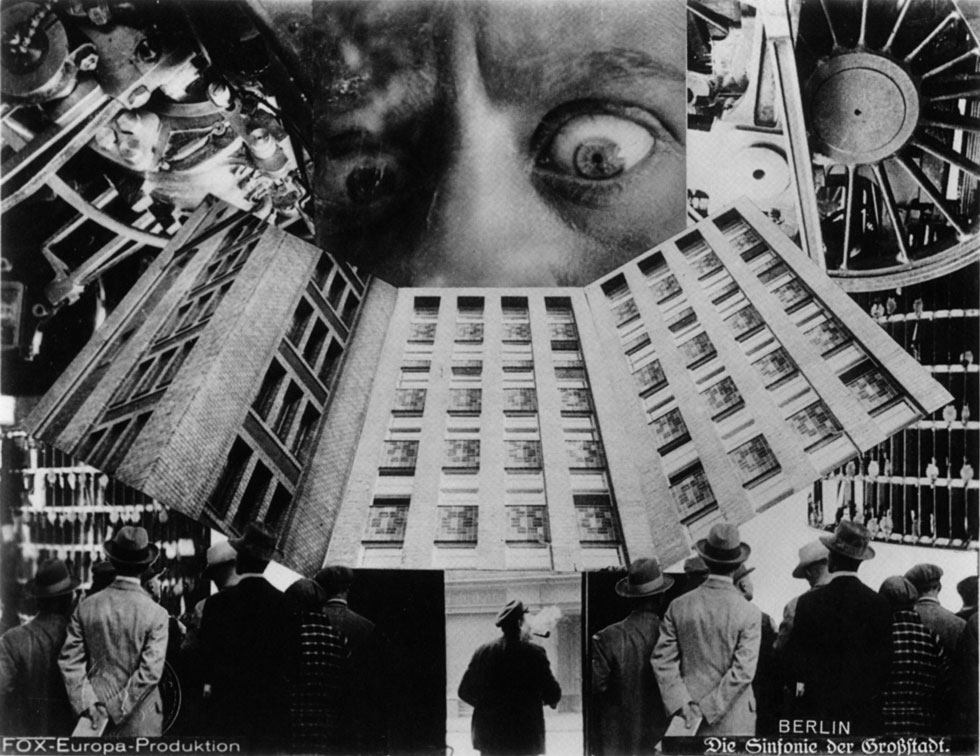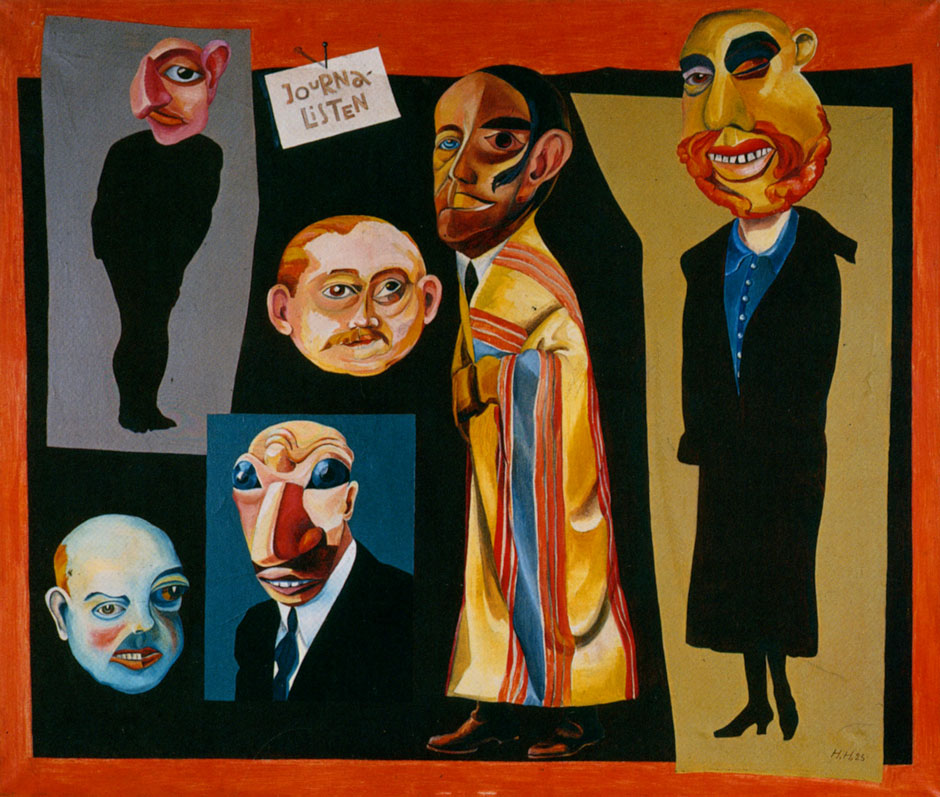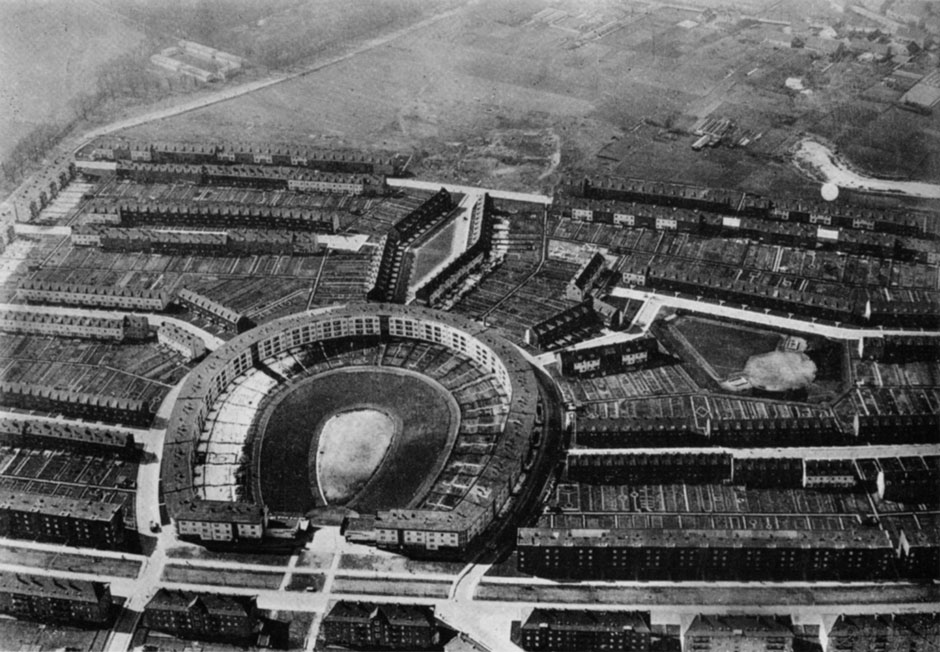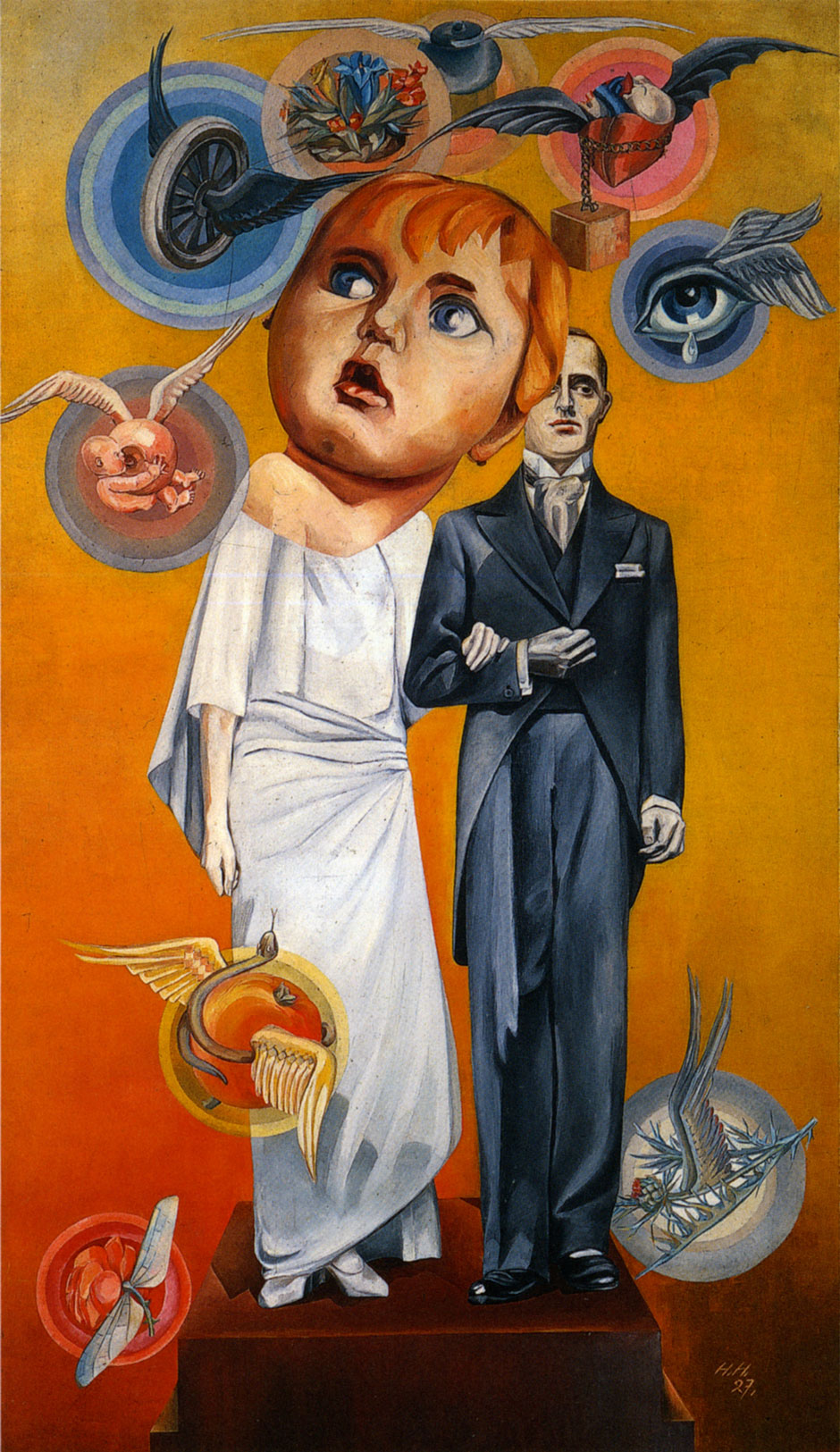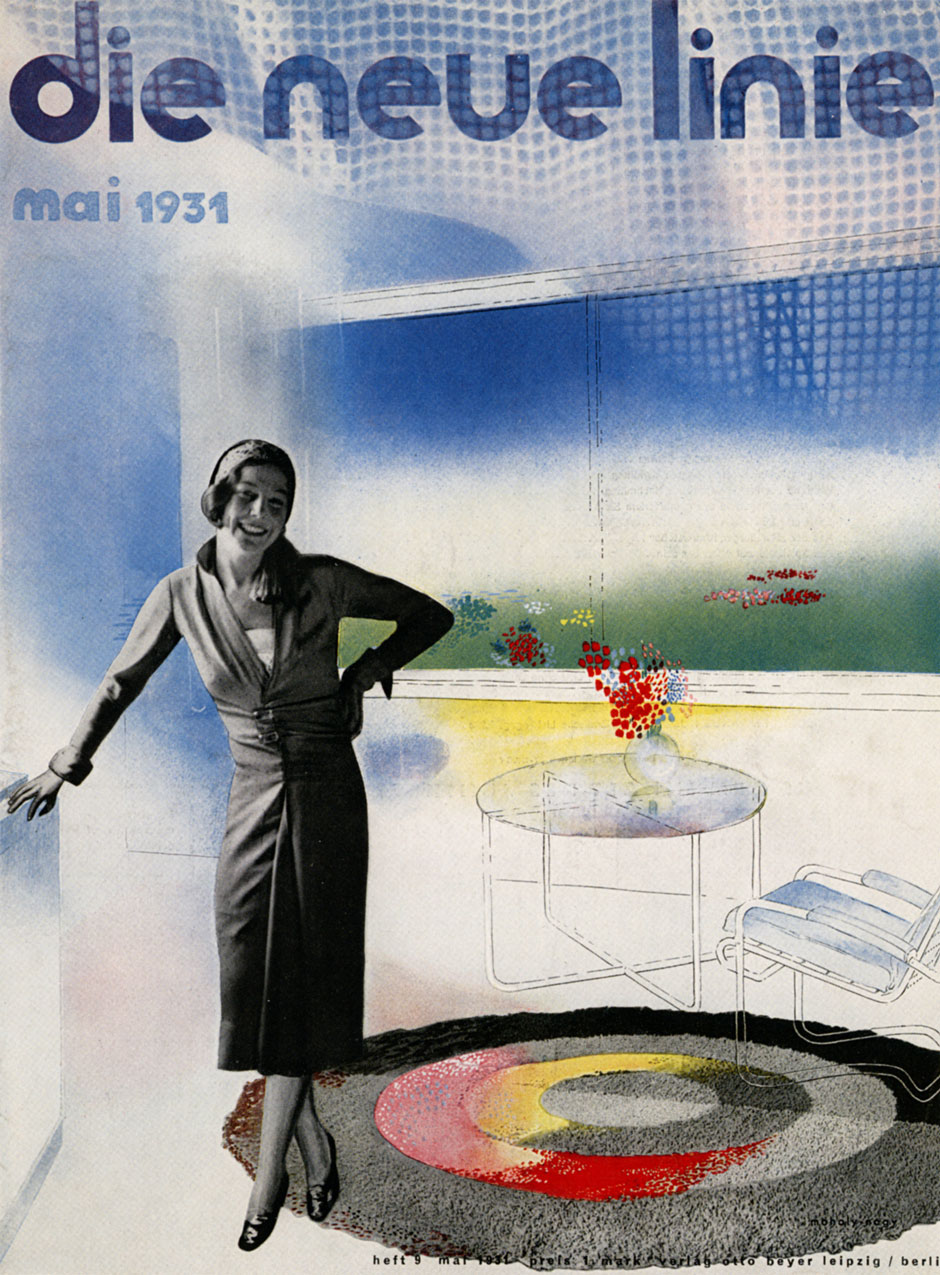Few modern urban settings have exerted a stronger grip on the popular imagination than Weimar Berlin, typically presented as a nonstop freak show of grotesque transvestites and mutilated war vets, lumpen Brechtian beggars and top-hatted industrialists, Charleston-crazed floozies, effete gigolos, and brazen rent boys. To be sure, this cartoonish image originated in the period’s corrosively satirical art, especially that of George Grosz, Otto Dix, and Max Beckmann, all of whom are represented in the thrilling exhibition “Berlin Metropolis: 1918-1933” at New York’s Neue Galerie, a heady mix of painting, collage, architecture, photography, film, graphic design, and fashion that vividly evokes the creative maelstrom of the German capital during the Weimar Republic.
But the show also draws on economic history, urban planning, and gender studies to challenge the simplistic notions of “divine decadence” set in place by John Kander and Fred Ebb’s 1966 Broadway musical Cabaret and its numerous revivals, including Bob Fosse’s 1972 film adaptation. The Hollywood connection is not unmerited. Because of Weimar Berlin’s peculiar morphology and the large percentage of its residents who were born elsewhere, the exhibition’s curator, the German art historian Olaf Peters, rightly likens the city’s metastatic agglomeration of low-rise villages to the only municipality that exceeded its 344-sqare-mile landmass: Los Angeles.
That comparison is further strengthened by Berlin’s Babelsberg studios having been the center of the thriving German film industry, with two of its most internationally acclaimed releases, Fritz Lang’s Metropolis (1927) and M (1931), shown on monitors in the galleries. Both cities had only recently risen to prominence—Berlin when it became the capital of the newly unified Germany in 1871, and LA when moviemakers relocated there from New York in the 1910s—and thus readily embraced flashy upstarts untrammeled by local tradition or conventional mores.
Peters will be familiar to New Yorkers as the organizer of the Neue Galerie’s enormously popular 2014 exhibition “Degenerate Art: The Attack on Modern Art in Nazi Germany, 1937,” which provocatively revisited the Third Reich propaganda show that branded (much if not all) avant-garde painting and sculpture as perverse aberrations of racial devolution. Now, in “Berlin Metropolis,” he brilliantly synthesizes the conjunction of political, social, and economic forces that resulted in a fifteen-year outpouring of innovative artwork in all mediums. Drawing on 350 well-chosen examples displayed in six jam-packed galleries arranged by Richard Pandiscio (who also designed the handsome catalog), the survey summons up the fast-paced, jittery, but scintillating atmosphere of a wide-open world city that attracted foreign hedonists enticed by its louche nightlife; yet Peters corrects several entrenched misapprehensions about interwar Berlin, especially that it was mired in unrelieved poverty.
In the superb publication accompanying the show, the curator points out that although the German economy had been crippled by disastrous post-World War I inflation, the US-sponsored Dawes Plan resulted in five years of strong recovery and booming consumerism before the 1929 crash. This complex sequence of developments gave the emerging metropolis a fast-growing population and restless energy—sparking an atmosphere of artistic experimentation that was best conveyed through the fragmented techniques of collage, montage, and assemblage, the exhibition’s visual through-line.
A pulsating vitality comes across in Walther Ruttman’s 1927 documentary Berlin: Die Sinfonie der Grosstadt (Berlin: Symphony of a Metropolis), which is projected on a wall of one gallery. (A propulsive symphonic score by Edmund Meisel was written for the silent film and accompanies the screening in the current show.) Hugely influential, the film’s overlapping jump-cuts and oblique camera angles were routinely copied in 1930s Hollywood. A disorienting, off-kilter feeling likewise pervades Berlin’s characteristic street-scene compositions, including Grosz’s 1919 ink-and-watercolor Panorama (Down with Liebknecht) and Karl Hubbuch’s 1923 lithograph Intoxication of Lunatics.
The stylistic polarities of early Modernist architecture in Weimar Berlin are represented by two celebrated but disparate Expressionist images: Erich Mendelsohn’s tiny sketch for his handmade-looking Einstein Tower in nearby Potsdam (1917-1921) and Ludwig Mies van der Rohe’s almost-six-foot-high rendering for his unexecuted, crystalline Friedrichstrasse Skyscraper (1921), which presages the steel-framed, glass-walled towers that would dominate the global skyline a half-century later.
However, the city’s most extensive interwar construction program provided humane, up-to-date dwellings for tens of thousands of workers, sponsored all around town by public and private housing reform societies encouraged by the Social Democratic government. Much of it was designed by Bruno Taut, who earlier in his career dreamed up unrealizable Expressionist fantasies before evolving into an utterly pragmatic housing specialist.
Another effect of Berlin’s rapid economic development in the 1920s was the emergence of die Neue Frau (the New Woman), the sexually, financially, and sartorially liberated female who could make her own way in the big city without a man. Appropriately for a show that honors Berlin as an encouraging environment for outsiders, the star of “Berlin Metropolis” is Hannah Höch (1889-1978), the Dada artist and pioneer of the women’s movement.
Advertisement
Best-known for her witty, small-scale collages (a marvelous selection of which are included here), Höch is also revealed as a painter of astonishing power, with four rarely-seen canvases that veer toward Surrealism but are representational enough to deliver pointed messages about ambiguities that confront even the most independent women to this day. Her 1924-1927 oil painting The Bride (Pandora) superimposes a huge, frightened-looking doll’s head atop the stylishly draped body of a bride who links arms with a tail-coated department-store-dummy groom. Around the unhappy couple swirl bubbles that bring to mind not the fizz of champagne but menacing Bosch-like winged spheres that variously enclose a teary eye, a serpent encircling a fruit, and a ravenous breast-feeding baby, among other primal symbols.
No less disquieting is her Immortal Life (1924), which suggests the outcome of such a union in its depiction of a manically grinning child who throws her chubby hands upward next to an equally tall, erotically detailed iris in full bloom, while in the background hovers a small planet with Earth-like continents but as blood-red as Mars. Auf wiedersehen to the traditional German Hausfrau’s mantra of Kinder, Küche, Kirche (children, kitchen, church).
Though Peters’s catalog introduction undercuts the exhibition’s premise by stressing that a good deal of Weimar era art and design now associated with Berlin was actually produced elsewhere in Germany, he cites several phenomena that led to the capital city’s cultural pre-eminence. In addition to the influx of some 300,000 immigrants from Russia after the revolution, the city’s population doubled from two to four million in 1920 when many outlying communities were annexed to the old city center (though the result was less metropolitan cohesion than urban sprawl). Indeed, as Peters notes, the writer and flâneur Fritz Hessel, whose 1929 book Spazieren in Berlin (To Walk in Berlin) celebrated the joys of exploring the capital on foot, had to take lengthy car journeys to encompass the newly expanded city. Furthermore, Berlin also had by far the largest Jewish population of any German city—160,000 in 1925, or about four percent of its population—underscoring its cosmopolitan character.
Conspicuously absent in “Berlin Metropolis” is any mention of the city as the world’s foremost gay and lesbian mecca during the 1920s and early 1930s, when homosexuals flocked there because of its permissive popular culture and profusion of same-sex gathering places. Considering today’s changing attitudes toward marriage equality and transgender rights this is a curious omission (although portraits by Christian Schad that clearly depict lesbians figure in the New Woman segment).
Interestingly, the spatial limitations of the Neue Galerie seem a boon in our age of museological gigantism. One can easily imagine an exhibition on this subject being exhaustively mounted by the Museum of Modern Art at four times the size but with half the selectivity and impact. Weimar culture is best imbibed in manageable doses, and as an art-historical mixologist of uncommon skill, Olaf Peters in “Berlin Metropolis” has poured a cocktail of exactly the right size and intoxicating potency.
“Berlin Metropolis: 1918-1933″ is at the Neue Galerie through January 4, 2016. All images are reprinted from the accompanying catalog, Berlin Metropolis: 1918-1933, edited by Olaf Peters, which has just been published by Prestel.


